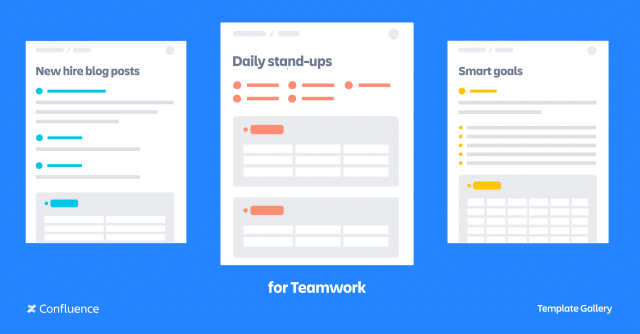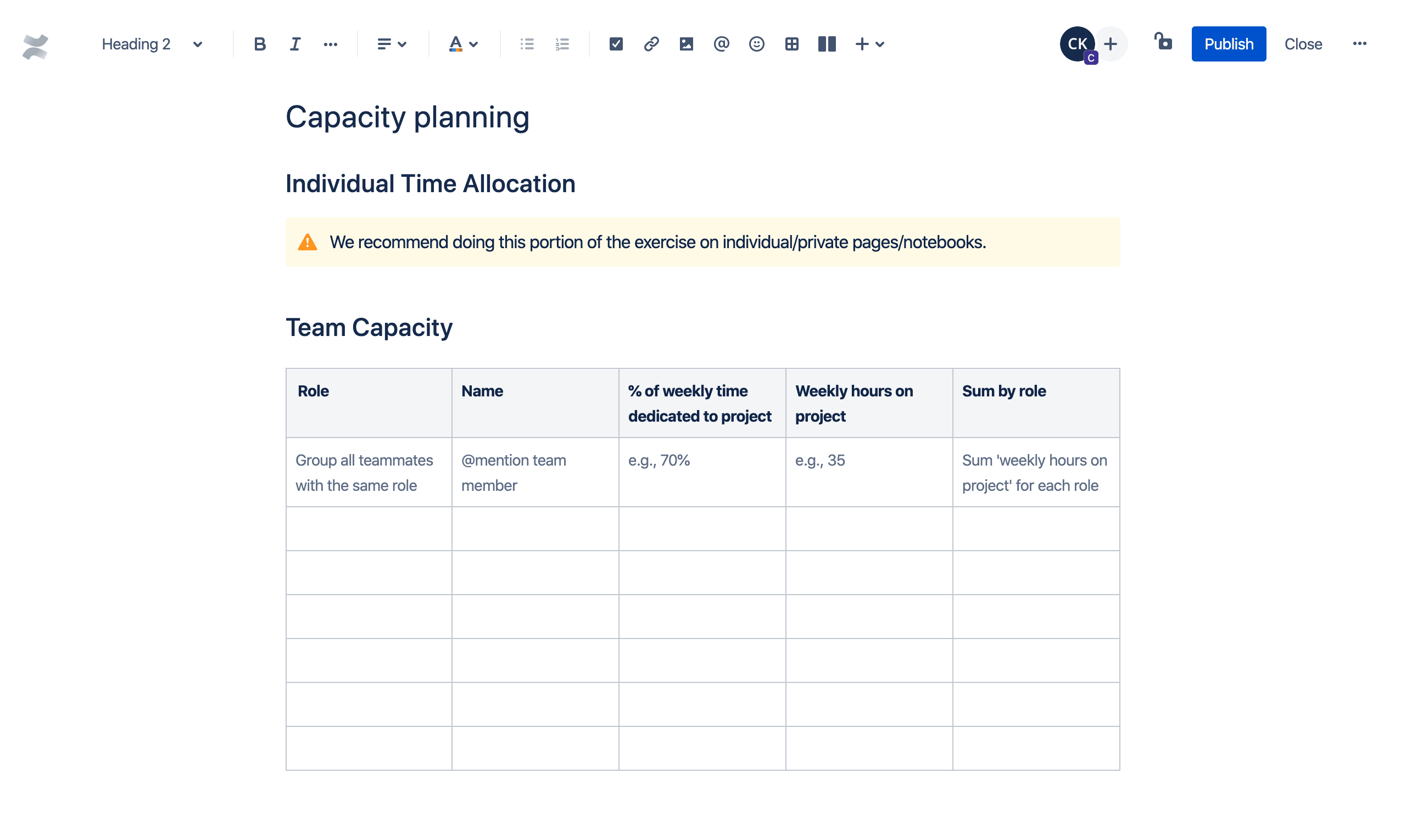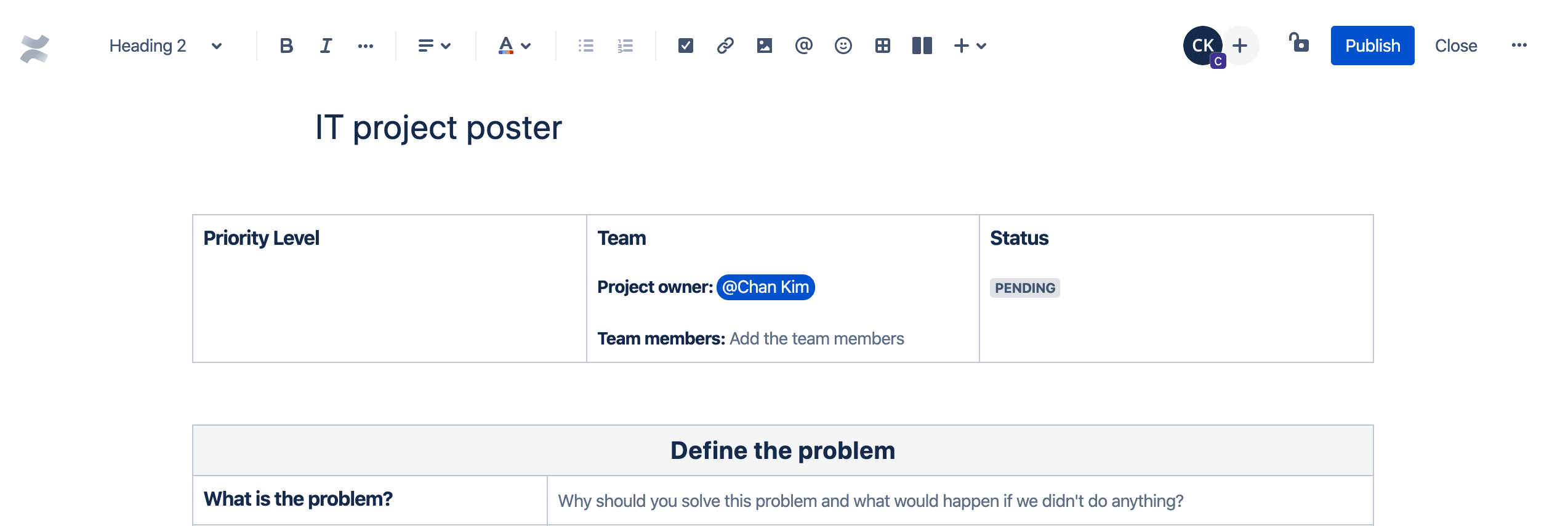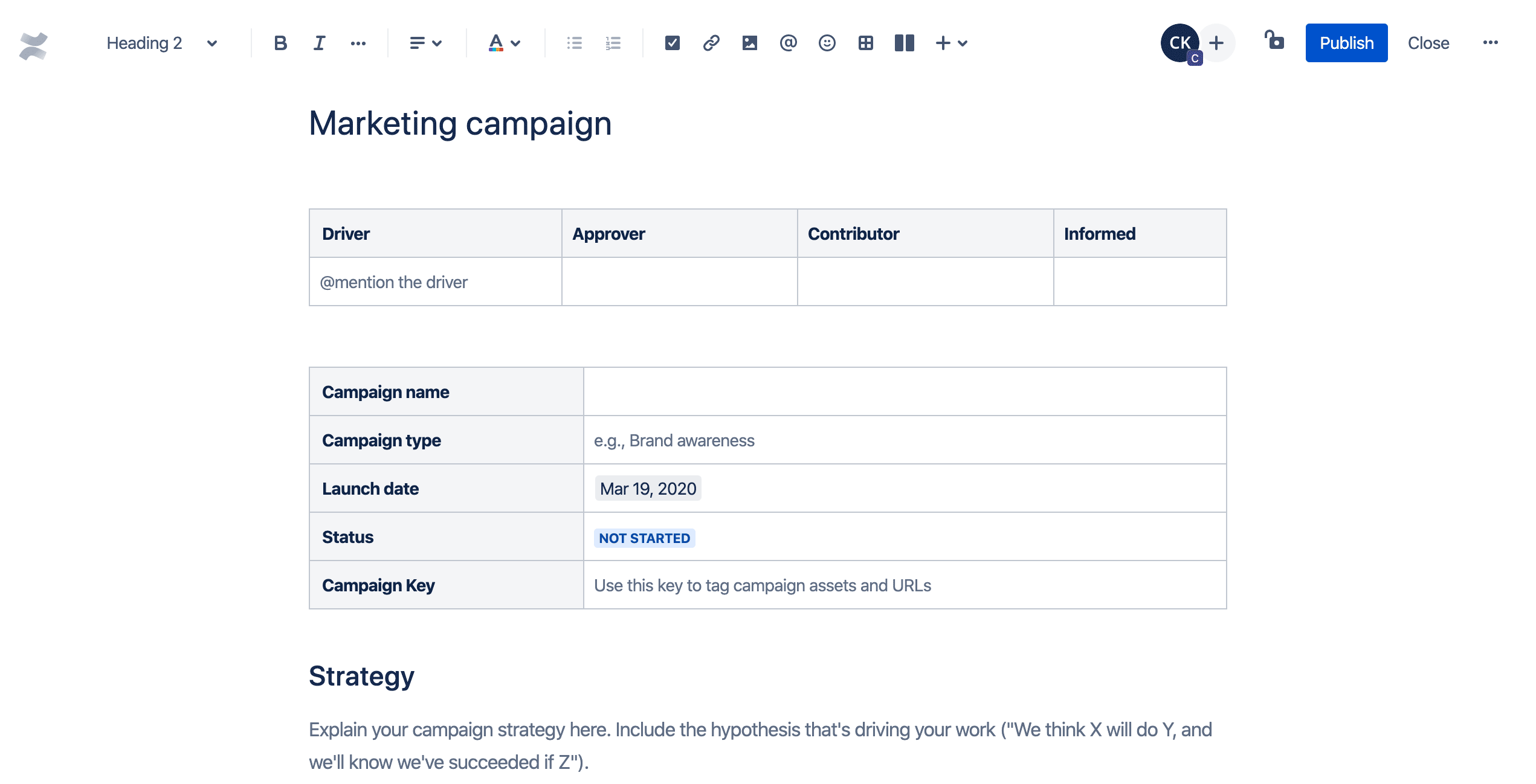Get the right work done faster with templates
Templates help teams beat procrastination, set expectations, and pave the way toward reaching their goals

Somehow, the most important deliverables are the hardest to tackle, even if the work is interesting or enjoyable (and especially if it’s not). When you’re struggling to make progress, it won’t help to blame inaction on a lack of will or motivation. A whole host of blockers can hinder your progress. Culprits may include psychological issues such as anxiety, perfectionism, fear of failure, decision fatigue, and imposter syndrome. But it could be undefined goals that are keeping you stuck, or maybe a million other tasks and distractions are hijacking your focus. It’s no wonder that an American Psychiatric Association study found procrastination chronically affects 15% – 20% of adults.
At work, we also often wrestle with another productivity killer: unclear expectations. Ambiguity can make you unsure how to move forward; if you do act, it can cause a waste of time and effort, as the output may not be what was desired or needed. This situation creates so much employee stress that one Gallup study posited that clearer employer expectations could reduce company turnover by as much as 22%.
A Gallup study posited that clearer employer expectations could reduce employee turnover by as much as 22%.



